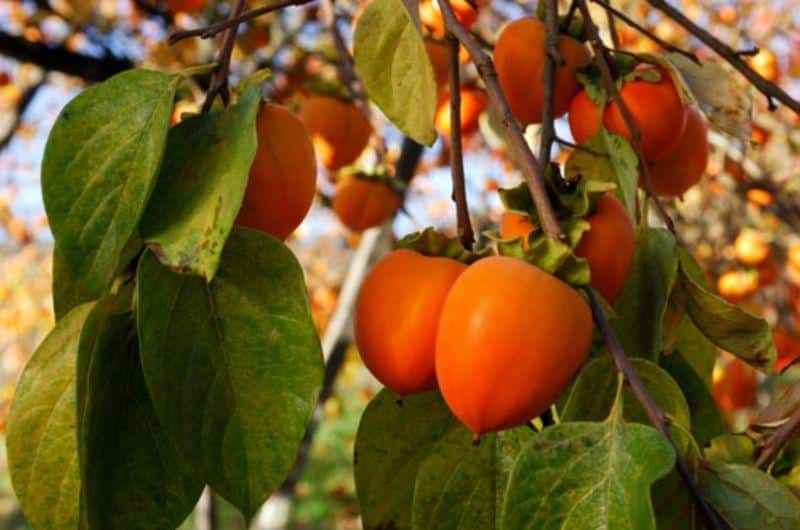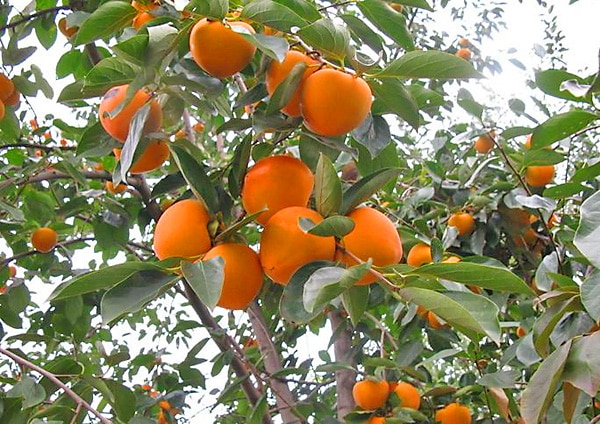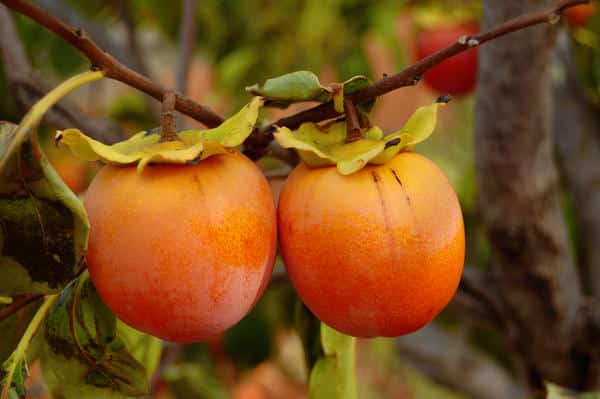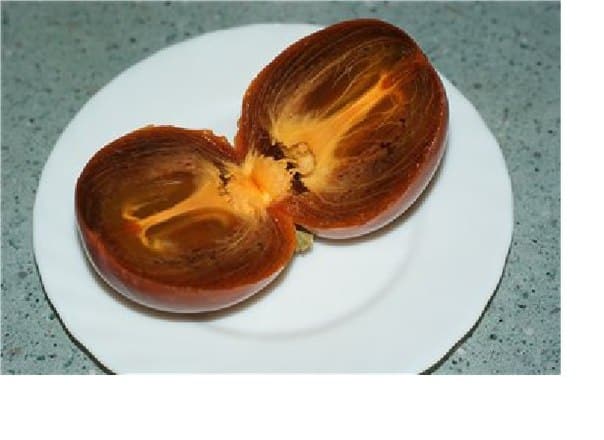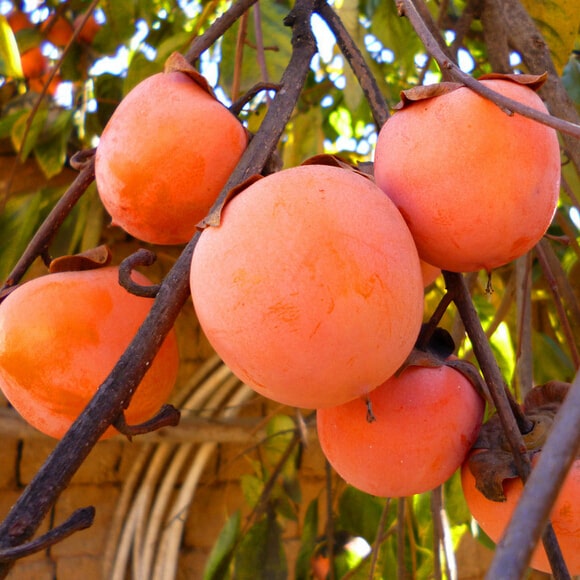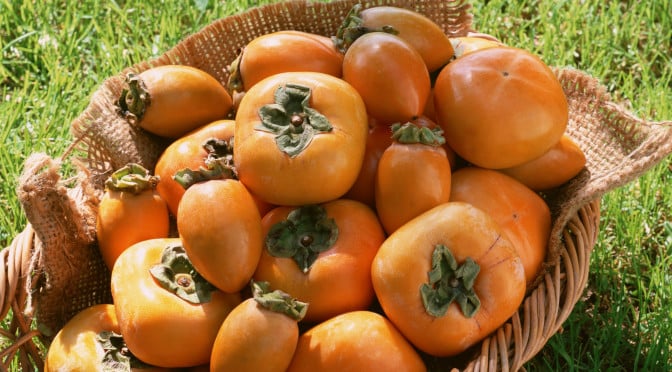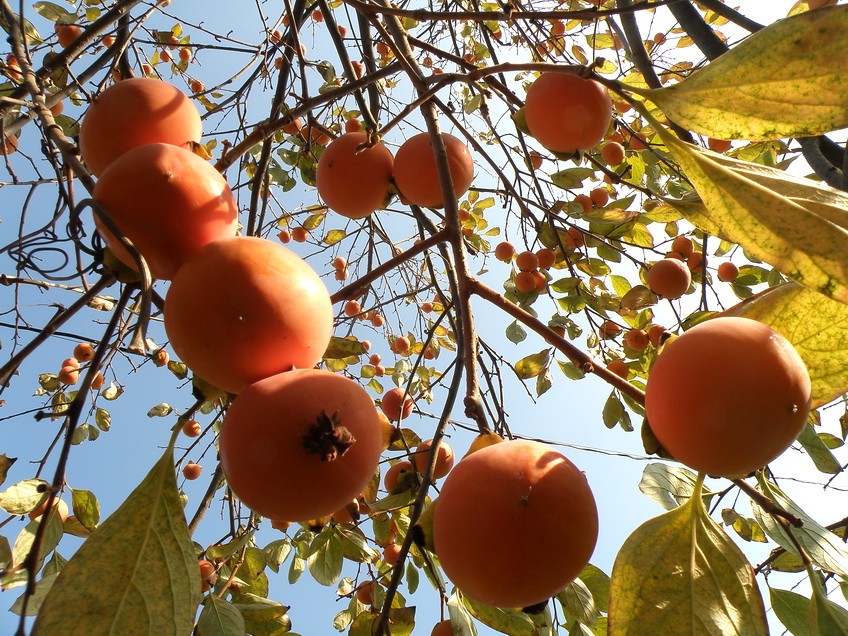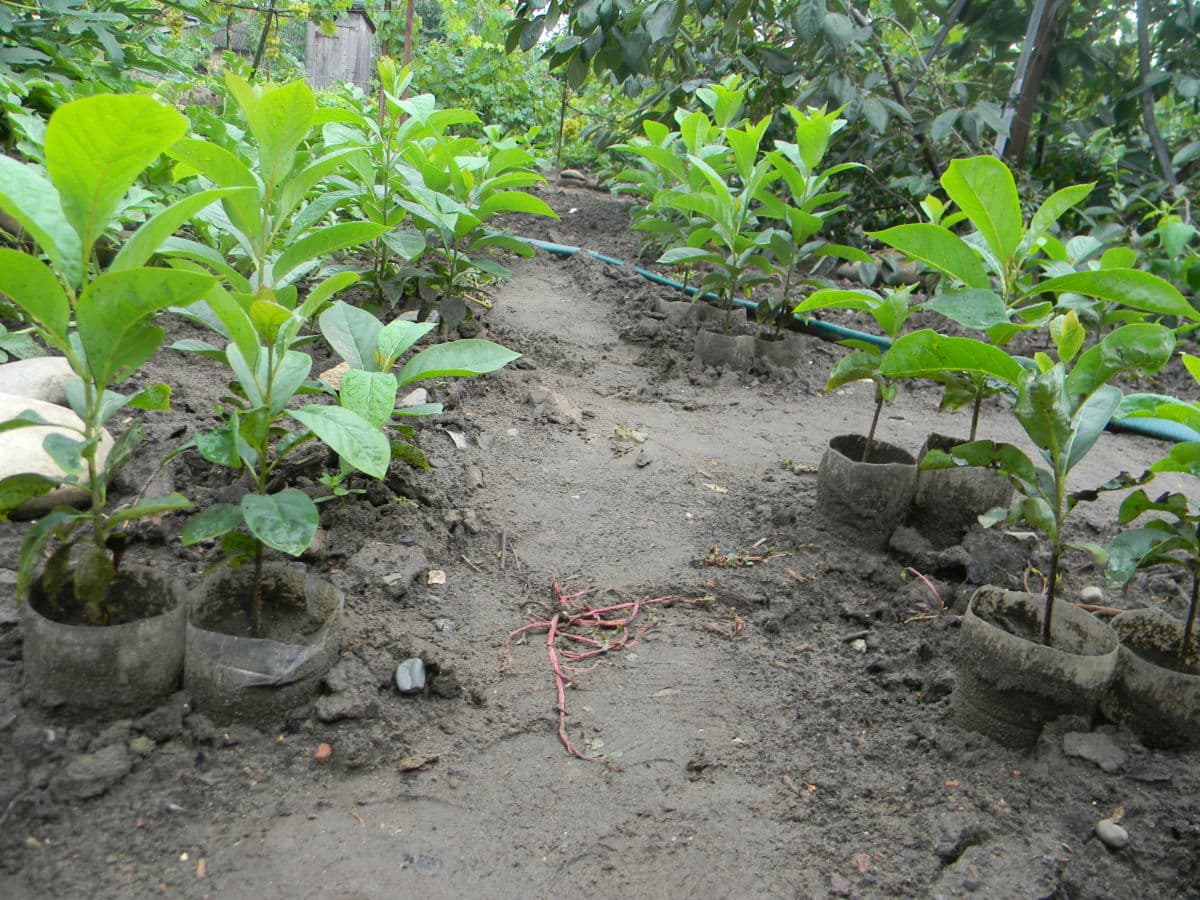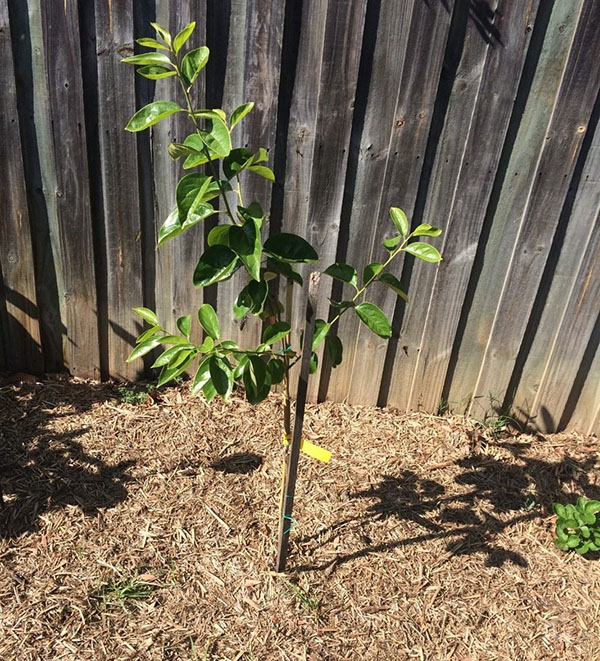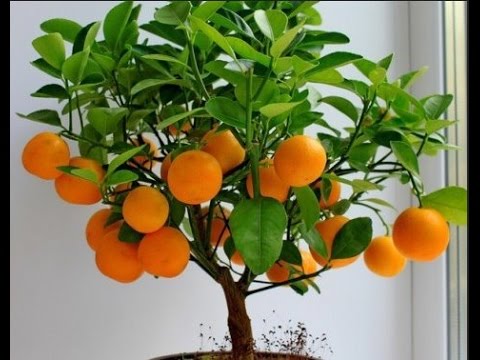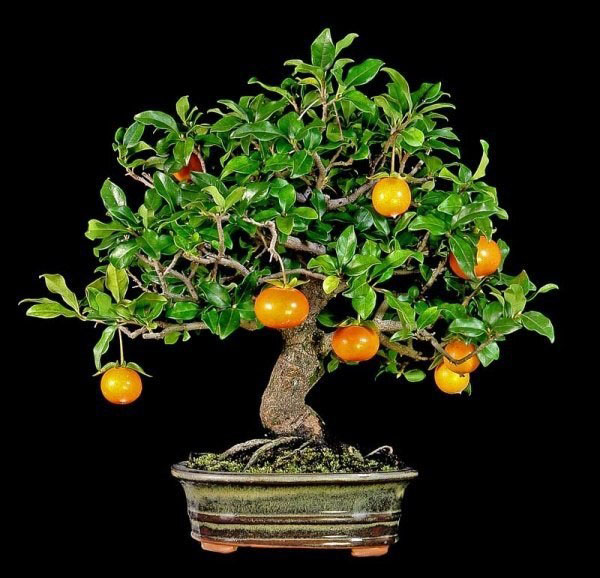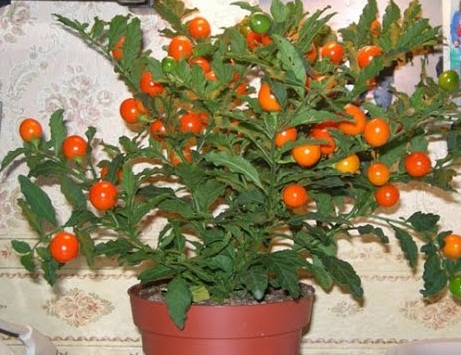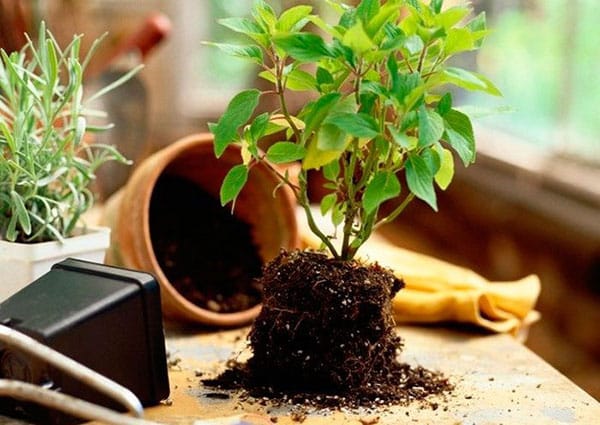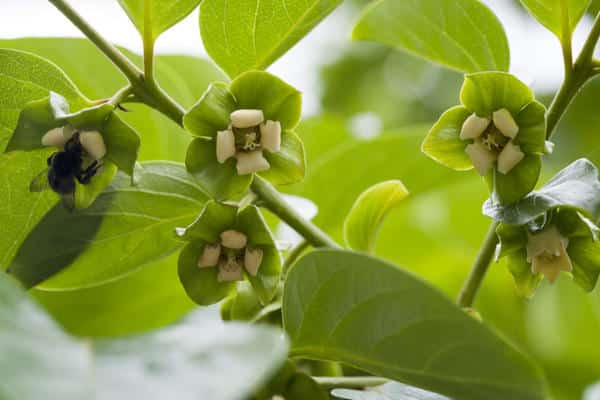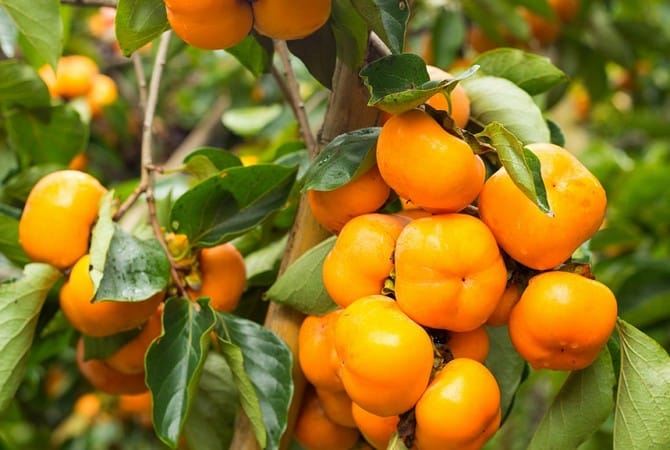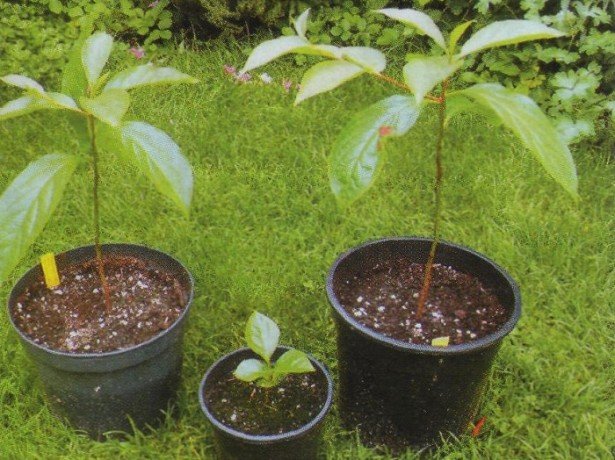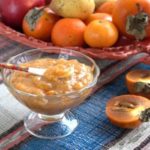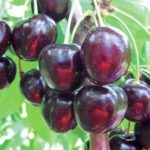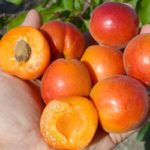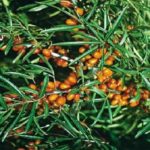Trees and shrubs from the Ebony family live for hundreds of years and differ in appearance, shape and shade of fruit. Although the Chinese were the first to cultivate persimmons, the varieties grown in South America surprise with the largest berries. In the countries of Transcaucasia and Greece, trees with miniature fruits weighing less than 50 grams are planted. Israeli breeders created seedless Sharon. Growing persimmons is not so difficult if you know the characteristics of the chosen variety.
- Description and external parameters
- Varieties and varieties
- Russian
- Eastern
- Korolek
- Caucasian
- Virginskaya
- Nikitskaya burgundy
- Velvet
- Chocolate
- Darakhti
- Bull's heart
- God's gift
- Small blue
- Mid
- Mini
- Mountain
- How to grow persimmons
- From the seed
- From a seedling
- Rules for growing a plant
- Growing in open ground
- In what areas can it be grown?
- In room conditions
- Features of seasonal care
- Watering
- Top dressing
- Lighting
- Temperature
- Trimming and pinching
- Graft
- Transfer
- How to prepare persimmons for wintering
- Fruiting period
- Flowering and pollination
- Beginning of fruiting
- Fruit ripening times
- Harvesting and storage
- Persimmon propagation
- Optimal timing
- Methods
- How to graft persimmon
- Diseases and pests - methods of control
Description and external parameters
Trees from the Ebony family reach 15 meters in height, shrubs - 5. The oval leaves of persimmon, which are pointed at the ends, fall off every year. Their outer side is shiny and the inner side is matte. The diameter of the fruit in some varieties is only 2 cm, in others it reaches 15. The berries hang on the tree when there are no leaves at all, which acquire a bright red color before falling, but the plant does not remain without them for long.
What the fruit looks like depends on both the stage of ripening and the variety. In a ripe fruit, the skin acquires a reddish tint, and the pulp becomes jelly-like and loses its tart taste. The berries contain 5–7 seeds, but hybrids may not have grains.
Varieties and varieties
In autumn, sellers stock their shelves with orange fruits. Most often they bring Sharon and Korolek. Inedible, tart persimmons are found in the wild, but hundreds of cultivated varieties have been created that have a pleasant taste.
Russian
Almost 60 years ago, Crimean breeders developed a persimmon hybrid that is adapted for cultivation in a climate where winter frosts reach 35 °C. The short tree of the Rossianka variety blooms in June and does not require nearby pollinators.The following year after planting, fruits appear:
- round shape;
- yellow-orange color;
- weighing about 50 g;
- hard pulp.
The berries have a tart taste, and after ripening they become softer and tastier. The variety has several subspecies with different shades, without grains and with seeds.
Eastern
The Japanese persimmon tree grows up to 15 meters in height. The brown, pubescent shoots bear oval, shiny leaves that turn red in the fall.
In place of yellowish-white flowers, berries are formed weighing up to 0.5 kg.
The shoots of eastern persimmon freeze at 20 °C below zero, but the next year buds are laid and an ovary is formed. The tree does not take root in wetlands and requires heat. Ripe fruits acquire sweetness and orange color.
Korolek
The berries of this persimmon variety ripen from male flowers on trees 8 to 12 m tall. The underside of the leaves has a light green tint. In May, the Kinglet produces single burgundy buds. By autumn, the fruits ripen, which differ:
- spherical shape;
- chocolate color;
- sweet creamy pulp.
The berries are rich in pectin, fiber, vitamins, and are used for making jams, making molasses and beer. Roasted seeds produce a drink reminiscent of coffee.
Caucasian
This persimmon tree has powerful roots, the trunk looks like a column. Oval leaves form a beautiful and lush crown. In summer, greenish flowers appear; the diameter of ripe berries is only 20 mm. The tart fruits of Caucasian persimmon contain up to a dozen grains, the bark contains tannins, and the leaves are rich in quinine. From one tree, up to 20 buckets of bright yellow berries, which are low in calories, are collected.
Virginskaya
In North America, in the Mediterranean countries, and in the Caucasus, a tropical crop variety is grown, which participated in the development of the Russian hybrid. Virgin persimmon is pollinated by bees and wind, grown from the seed, but it is better to purchase a seedling. The fruits have juicy pale yellow pulp, weigh up to 500 g, and the berry diameter is about 6 cm.
Nikitskaya burgundy
The creation of persimmon hybrids was carried out in the Crimean Botanical Garden. When pollinated by Rossiyanka, bred by Ukrainian breeders, and the Eastern variety of tropical fruit, a new variety was obtained, which was called Nikitskaya Burgundy. The low tree has a pyramidal crown and can withstand frosts down to 25 °C. The berries ripen in early October, individual specimens weigh 120 g. The sweet fruits are covered with a purine coating and have a burgundy tint. One plant produces up to 7 buckets of fruit.
Velvet
Among the 500 varieties of crops from the Ebony family, there are also those whose fruits differ in appearance from the most common varieties of persimmon. Evergreen Mabolo trees grow slowly, but reach a height of up to 20 meters, do not shed leaves, and are found in the Philippines. The berries have a velvety surface and are yellow, red, or purple.
The green fruits smell damp, but when they ripen, the flesh becomes juicy and aromatic.
Chocolate
Europeans who came to Central America were attracted by trees with decorative leaves of light green color and spherical fruits. Ripe Chocolate persimmon berries are distinguished by their brown color, the sweet pulp surprises with its fragrant aroma. The trees bloom very profusely, attract insects, tolerate heat easily, but are demanding of humidity.
Darakhti
This variety of persimmon is grown in Tajikistan and other countries of Central Asia on irrigated lands, and is cultivated in India. Orange fruits ripen on low trees; when ripe, they have a sweet taste and delicate aroma.
Bull's heart
Trees of the self-fertile variety are distinguished by a dense crown formed by dark green leaves. The weight of ripe orange berries reaches 300 grams. They have dense flesh and are easily transported. Ox heart is grown on an industrial scale, requires regular watering, does not like drafts, and tolerates cold temperatures down to -25 ° C.
God's gift
The variety can withstand Siberian frosts, produces fruits in the third year after planting, and the weight of individual specimens approaches 120 grams. Ripe berries are not orange, but burgundy in color. God's Gift pollinates other varieties of crops, since it has 2 types of flowers.
Small blue
Persimmon, growing wild in Dagestan and Western Georgia, is a tree up to 10 meters high. The fruits are spherical in shape, their diameter rarely exceeds 5 cm, and the berries are dark blue, almost black in color.
Mid
Trees of this variety reach 15–18 meters in height, withstand frosts over 30 degrees, and can grow and bear fruit in mid-latitudes. Mider persimmon berries have the shape of a flattened ball and are valued for their delicate taste and refined aroma. Even unripe fruit has no astringency; it also has no seeds.
Mini
Many years ago in China they began to plant plants in containers, creating real art. Any interior will be decorated with a tree with amber-colored fruits. Miniature persimmon looks amazing in a tub. It is planted as an ordinary houseplant, watered and sprayed abundantly in summer, and taken into a room with a temperature no higher than 10 °C in winter.
Mountain
Wild dates or persimmons grow in the gorges and deciduous forests of the Caucasus. The trees reach a height of 30 meters. The wood is used to make furniture, and vitamin tea is brewed from the leaves. The flowers serve as honey plants and attract wild bees. Mountain persimmon berries are less than 2 cm in diameter, when ripe they become almost black and are covered with a purine coating.
How to grow persimmons
In a temperate climate, a tropical crop will not produce high yields of large fruits, even when you choose an early variety, but if you carry out annual pruning to form the crown, the southern plant will perfectly decorate the garden.
From the seed
Lovers of indoor flowers plant persimmons in tubs and flowerpots. It takes root well if you choose high-quality seeds. You can prepare seed material yourself from a ripe and healthy fruit. Sprout the seeds in a wet cloth, wrapping them in cellophane. In a warm place, sprouts appear after 2 or 3 weeks.
The seed is planted in a pot; next year the bush can be moved to an area that is illuminated by the sun all day and is closed from drafts.
From a seedling
The second method is suitable for those who are going to grow crops in open ground. To avoid acquiring a wild one, a young tree must be purchased from a nursery. Planting is carried out in the spring; the root collar needs to be deepened by approximately 10 cm by grafting on the south side. The earth is lightly compacted, watered, and mulch is poured.
Rules for growing a plant
In the garden, low trees are placed in a 3 x 3 pattern, and 7 meters are left between tall varieties. When purchasing a high-quality seedling, persimmons can please you with fruits already in the third year, if you create all the necessary conditions for it.
Growing in open ground
In order for a tropical crop to perform not only decorative functions, but also to bloom luxuriantly and reward it with a harvest, the place for planting the tree is chosen in an area where no piercing wind blows and there are no drafts. Any soil is suitable, except for marshy soils and salt marshes. In temperate climates, frost-resistant early varieties take root normally, and trees are planted in the spring. For several years they will have to be carefully covered for the winter.
In what areas can it be grown?
Persimmon feels good in the Krasnodar and Stavropol Territories, in the North Caucasus. Breeders have created hybrids that bear fruit in the Moscow region, in the Belgorod region. In central Russia, the frost-resistant Virginia persimmon grows normally, a variety of American selection that can withstand minus 35. The Russian hybrid is also adapted to temperate climate conditions.
In the Urals, tropical crops can only be planted in a heated greenhouse, and not grown in the garden. A tree in a harsh climate lacks the sum of high temperatures.
In room conditions
Having selected seeds from ripe persimmon fruits, they can be planted in a pot at home. After stratification, the grains are deepened 1 or 2 cm into the soil prepared:
- from humus;
- turf land;
- wood ash;
- bone meal;
- coarse sand.
The container is covered with glass and ventilated regularly. After the sprouts appear, the seedlings are transplanted into other pots and left on the windowsill.
Features of seasonal care
The southern plant will develop well if you create optimal conditions for it and know how to care for the tropical guest.
Watering
In addition to warmth and sun, the roots and leaves of the tree need a lot of moisture, but it should not stagnate. It is useful to spray persimmons with warm water, and it is better to do this in the evenings. How often to water a plant in the garden depends on the weather.In arid climates, you will have to irrigate every day, loosen and mulch the soil in the tree trunk circle.
Top dressing
When planting a tree, add a bucket of rotted manure and a glass of superphosphate into the hole, mixing well with the soil. After a couple of months, the plant is fertilized liquid solution of vermicompost. Chicken droppings, wood ash, compost, and slurry are suitable for feeding. In the first years, nutrients are introduced into the tree trunk circle.
Lighting
The tropical guest has a long growing season. If persimmon is planted in the shade, the leaves will curl and the ovary will fall off. The tree will develop normally only if there are at least 2 thousand hours of light, otherwise it will have to be planted in a greenhouse, where additional lamps will be installed.
Temperature
Persimmon loves the sun; in summer it feels great at 20–30 °C, but it may not survive the cold winter. Even frost-resistant varieties planted in open ground need to be covered; at minus 20, the roots suffer and the shoots freeze.
Trimming and pinching
When the height of the tree reaches half a meter, the formation of the crown begins, the side branches are shortened so as to give it the appearance of a ball. The main shoot is pinched, regular thinning helps prevent thickening, it is better to do this in the fall; summer pruning involves removing dried branches.
Graft
In order for persimmons to begin to please the harvest faster, it is necessary to accelerate the formation of flower buds, for this purpose:
- At the base of the strongest shoot, the bark is cut off in the form of a ring, perpendicular to its growth.
- The ring is grafted to the cut site with the reverse side.
- Secure with cling film to prevent infection from getting into the wound.
Persimmons will quickly produce berries when they are planted with a cutting from a tree that is already bearing fruit.Knowing what to graft a shoot onto, you can significantly speed up the formation of flower buds.
Transfer
If a tropical guest is grown not in open ground, but on a windowsill, the pot becomes cramped for the roots after a while. The persimmon is transplanted into a new container, 3 cm larger in diameter. The tree is moved to open ground in the southern regions in the spring by digging a hole 60 cm deep. In cold climates, it is better to grow a tropical crop in a tub, and in the summer take it out to the balcony or garden.
How to prepare persimmons for wintering
In late autumn, the tree needs to be watered abundantly. Although hybrid varieties can tolerate severe frosts, the plants must be covered for the winter for the first 4 years after planting. To do this, hammer 3 pegs around the trunk and pull the burlap. The roots are buried in soil, and it is advisable to wrap the skeletal branches with material.
Fruiting period
Summer residents who grow persimmons from seeds should not wait for the berries to appear quickly. The tree will look beautiful, but there are no large harvests in a temperate climate.
Flowering and pollination
A wild bird grows from a seed. To make persimmons happy with fruit, they graft a shoot from a tree or bush that already had berries. The heat-loving crop blooms in June in the third or fourth year, but in order for the ovary to appear at home, you need to plant a pollinator plant nearby.
Beginning of fruiting
Even with the right place for persimmons, timely watering, maintaining a certain humidity and fertilizing, it is not always possible to wait for the berries when growing a tropical guest in a temperate climate. The tree begins to bear fruit in its seventh year.
Fruit ripening times
Persimmons bloom late, already when warm days arrive, but the berries have time to fill with juice before frost appears. In the south of Russia, the fruits ripen by the beginning of November.
Harvesting and storage
Persimmons are picked by hand, lightly twisting the stalk. Juicy berries are used for making jams and preserves, for freezing and drying. Fresh fruits can be stored at 0°C for no more than 3 months, and at room temperature for up to a week.
Persimmon propagation
You can grow several exotic plants in your garden or home; they will delight you with their decorative appearance.
Optimal timing
At what time to propagate persimmons depends on the chosen method. Cuttings are planted as soon as the threat of frost returns has passed. The seeds need to be harvested in the fall and germinate immediately; budding can be done in August.
Methods
In indoor conditions, persimmons are conveniently propagated by seeds; grafting is carried out in open ground. If there is a fruit-bearing tree growing in the garden, green cuttings can be performed.
How to graft persimmon
To speed up the flowering of a tropical crop and for its propagation, they resort to budding, in which young trees are grafted with one bud. The cuttings are harvested before the juice begins to flow, placed in damp sand and taken to the basement. One skeletal branch is cut down in the crown, and several prepared shoots are inserted into the stump.
Beginning gardeners do not know what can be used to graft a cutting from a fruit-bearing tree, although any of the budding options is used.
Diseases and pests - methods of control
Persimmons that grow in a pot on a windowsill are sometimes affected by powdery mildew. Ventilating the tree in the fresh air helps prevent problems from occurring.In the garden, tropical crops often suffer from root or gray rot. To combat diseases, fungicides “Topsin” or “Impact” are used.
In unfavorable climates and non-compliance with agricultural practices, branches and young shoots are affected by bacterial cancer, and the tree dies. To eliminate scab and fusarium, persimmons are sprayed with Bordeaux mixture and treated with Fitosporin. Sometimes mites and scale insects appear on the plant, which draw juice from the leaves and shoots. Insecticides or biological preparations “Boverin” and “Gaupsin” help get rid of pests.

